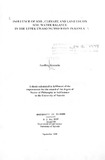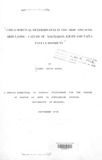Location
Our Vision is to be a world-class university committed to scholarly excellence.
Our Mission is to provide quality university education and training and to embody the aspirations of the Kenyan people and the global community through creation, preservation, integration, transmission and utilization of knowledge.
Core Values
In order to realize the above vision and mission, certain shared values shall be nurtured. There is great need for the University to be guided by the right values derived from the virtues and moral standards of the Kenyan and wider society.
Core Functions
Teaching and Learning: The university offers innovative , relevant and market driven academic programmes , both at undergraduate and postgraduate levels with inbuilt quality control systems the university also provides an environment and policy framework for undertaking high quality and relevant research
Members:
Resources
Displaying 241 - 245 of 298Factors affecting honey production in south east Kenya Rangelands: a case study of Kibwezi Division, Makueni District
A study on factors affecting honey production and indigenous knowledge of the Kibwezi Communities
in honey production was conducted using formal and informal interviews by questionnaires between January and
Sepicmber, 199). Honey plants were determined using pollen analysis, field observation and indigenous
knowledge. Botanical composition of trees and shrubs in unsettled University of Nairobi site and adjacent settled
area was determined and data ana lysed for density: frequency: diversity. similarity and dissimilarity indices.
Influence of soil, climate and land use on soil water balance in the Upper Ewaso Ng'iro Basin in Kenya
The influence of soil, climate, and land use on soil water balance was investigated in 3
agroclimatic zones within the Upper Ewaso Ng'iro Basin. Water balance was quantified
for various land uses and management systems in each zone. These were natural forest (NF),
grazing land (GL) and potato cropland (PC) on a mollic Andosol at Karuri; conventional
tillage (CT), mulch tillage (MT), overgrazing (OG) and controlled grazing (CG) on a ferric
Luvisol at Kalalu; and perennial grass (PO), enclosed perennial grass (PE), bare ground
Child survival determinants in tile arid and semi-arid lands
Carbon dynamics in slash-and-burn agriculture and land use alternatives of the humid forest zone in Cameroon
One of the environmental consequences of slash-and-burn farming is the loss of forest system carbon which in turn contributes to atmospheric change and impacts upon global climates. International attention has become focused upon the development of alternatives to slash-and-burn agriculture to alleviate poverty, protect biodiversity and reduce climate change. Before alternative land use systems can be evaluated in terms of carbon sequestration, baseline measurements of carbon dynamics resulting from current practices are required.




